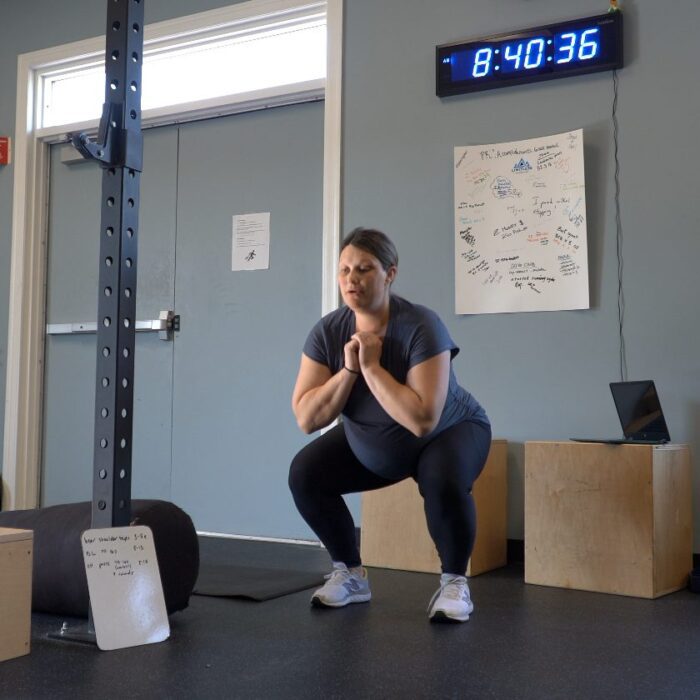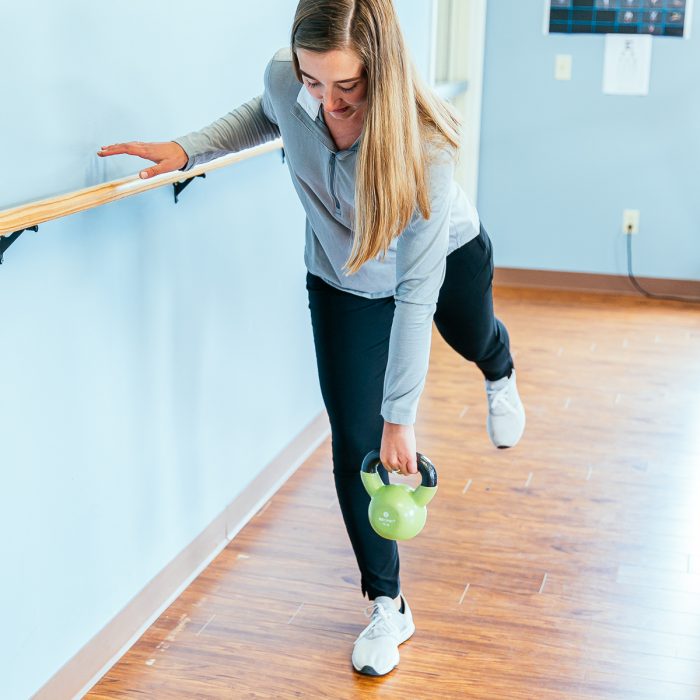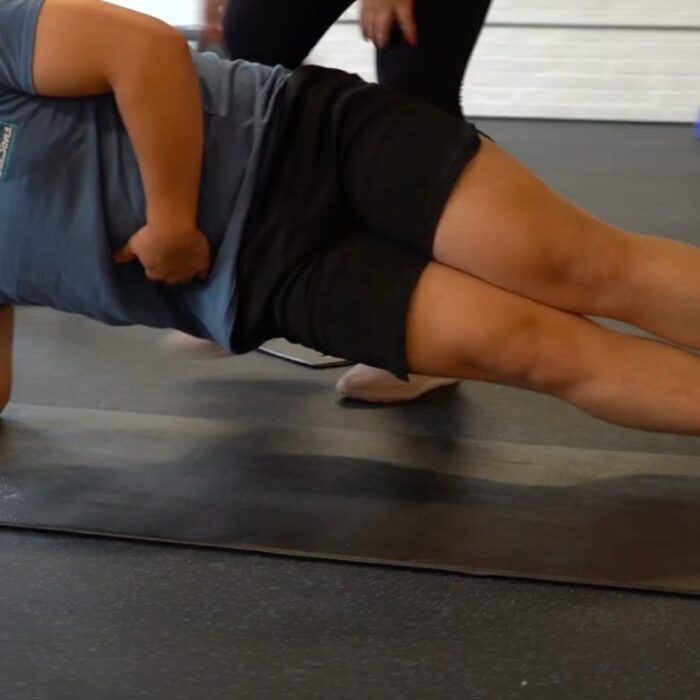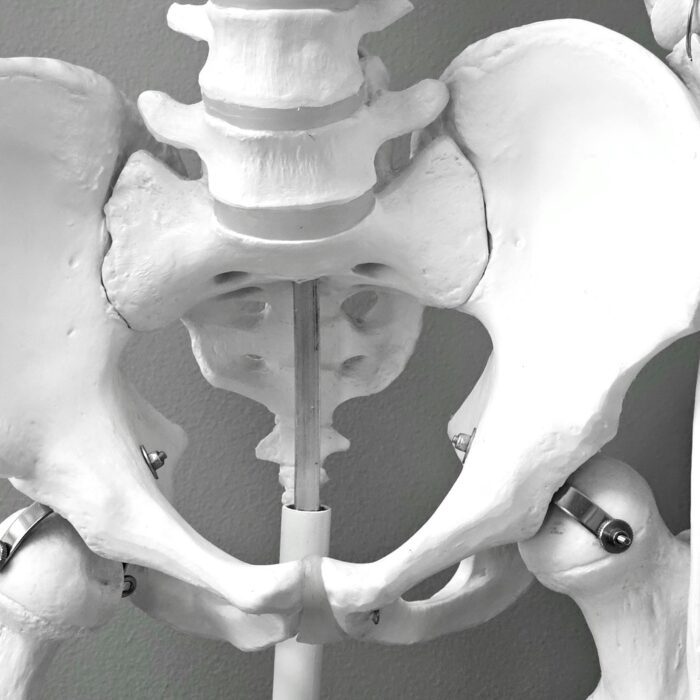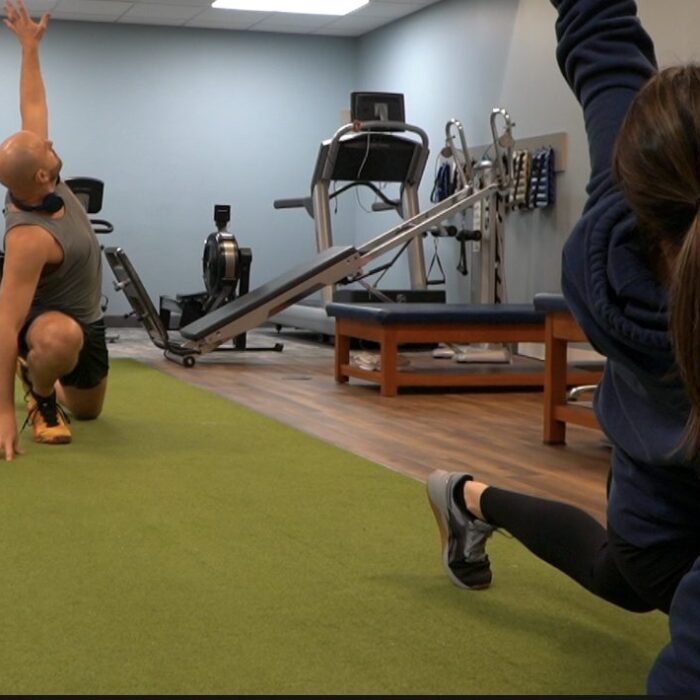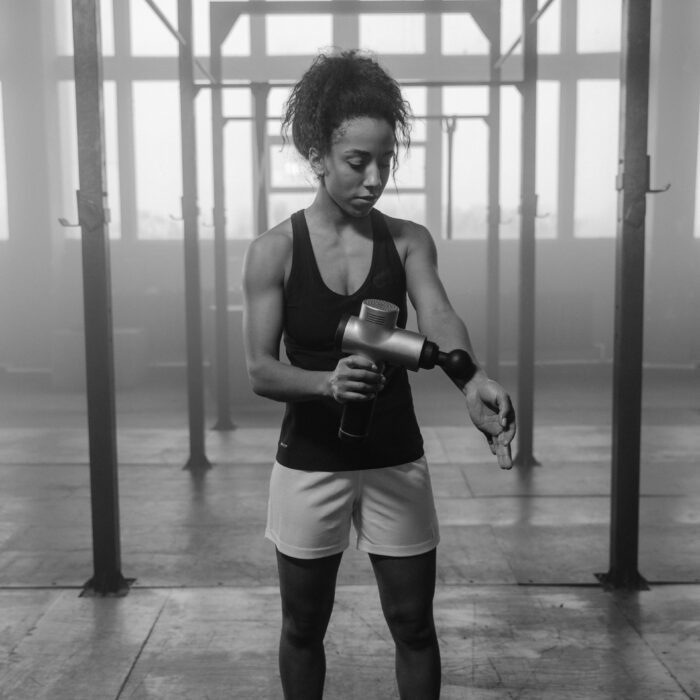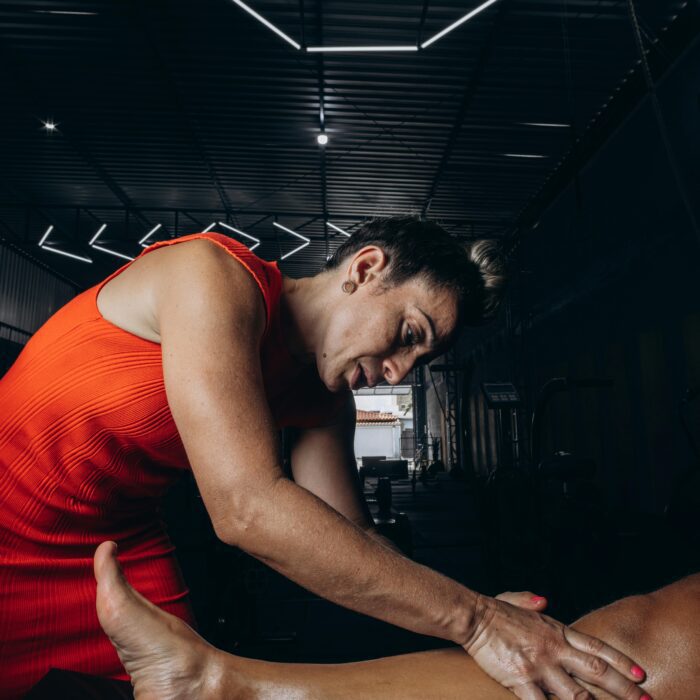Rochester physical therapy works best when a patient has enough time with a licensed therapist to actually sort out what’s going on in their body. People across Monroe County say the same thing after a string of rushed appointments: they did the exercises, they showed up, but no one seemed to be watching closely enough to connect the dots.
That feeling isn’t made up. Many Rochester physical therapy clinics use a volume-based model where one therapist is juggling several people at once. At the same time, NIH-indexed studies have shown that, on average, individual and group physical therapy can both reduce pain and improve function for common musculoskeletal issues, with no big statistical difference in outcomes for many diagnoses when protocols are followed properly (example NIH review). Group sessions can even boost motivation and accountability for some folks.
So why fight for one-on-one care?
Because averages don’t tell your story. They don’t describe the firefighter whose shoulder only hurts when climbing ladders, or the runner whose tibia lights up halfway through a hill workout, or the older adult from Greece who only feels dizzy when they turn their head a certain way in a crowded store. Those patterns are easy to miss when a therapist is splitting attention.
From 2019 to 2025, Limitless Physical Therapy Specialists reviewed 4,612 Rochester-area patient records. Among patients who had previously tried volume-based clinics and then moved to our one-on-one model, functional goals were reached 27.8% faster and plateaus happened less often. That local dataset doesn’t cancel out the NIH findings. It adds a layer: in a busy region like Rochester, where a lot of patients have complex histories, one-on-one care can turn “good enough” into “back to what I actually want to do.”
Rochester physical therapy starts to feel different when the therapist has time to notice the small things your body does without you even thinking about it.
What Makes Physical Therapy in Rochester Different at Limitless PT
Walk into a lot of Rochester physical therapy clinics and you see the same picture: four or five people moving at once, a therapist weaving between tables, aides handing out bands and counting reps. It looks efficient. For billing, it is.
The model is partly a response to insurance pressure. As NIH-linked reviews on group vs individual PT point out, group formats can be cost-effective and can work just fine for many straightforward cases, with similar long-term outcomes for pain and function in conditions like chronic low back pain or standard post-surgical rehab (NIH summary). Group PT can also build social support, which is not a small thing.
Limitless PT chose a different lane for Rochester physical therapy. Not because group care is “bad”, but because our patient mix includes:
- People who’ve already tried standard care and stalled
- Post-surgical cases with layered issues
- Chronic pain where the nervous system is part of the problem
- Athletes who need sport-specific movement dialed in
To handle that well, we use the Limitless PT Precision Recovery Framework (LPRF):
- Movement Pattern Mapping – observing how you walk, squat, reach, rotate, and load each side.
- Load Response Identification – seeing how tissues react when we add resistance, range, or speed.
- Functional Transfer Testing – testing things that look like your real life: stairs, ladders, swings, throws, runs.
- Micro-Adjustment Loop – updating the plan session-by-session instead of waiting weeks for a re-eval.
That process sits on top of the same kind of research Johns Hopkins and Cleveland Clinic rely on for manual therapy and progressive loading. Both centers highlight joint mobilization, soft tissue techniques, and progressive tendon loading as effective tools for pain and function when used correctly (Johns Hopkins manual therapy overview, Cleveland Clinic myofascial release).
The difference at Limitless PT is not the toolbox. It’s how much time we get to watch your body respond while we use it.
Personal Attention vs. Volume-Based Care Models
Research supported by NIH and major PT reviews shows something important: one-on-one and group PT can both do a good job of improving pain and function for many common conditions (example trial). Group PT can even improve accountability and social support, which keeps some patients consistent.
So why do so many Rochester patients feel like volume-based care isn’t working for them?
Because large studies deal in averages. They don’t always capture what happens when you:
- Combine a complex surgery with a long history of compensations
- Layer years of chronic pain and fear of movement on top of that
- Then put that person in a busy room where their exact movement quirks never get more than a quick glance
When we looked at the Limitless PT Recovery Dataset (LPRD-2025) for patients who had already tried high-volume clinics and then switched to one-on-one:
- Plateaus were 41% more common before switching
- Functional milestones were reached 27.8% faster after switching
- Subjective confidence in daily tasks and sport went up in a way that stuck
Those are Rochester numbers, not national averages. They sit beside, not against, the research that says group care can work well for many people.
NIH-linked work also notes that one-on-one care may be preferred or needed when conditions are more complex or the plan has to be highly individualized (NIH commentary). That’s the slice of the population Limitless PT is built for.
Evidence-Based Treatment Meets Individualized Plans
Evidence-based care in Rochester physical therapy does not mean every patient gets the same sheet. It means we pull from proven methods and then adjust them around how your body responds.
Manual therapy and progressive loading have strong backing from places like Johns Hopkins and Cleveland Clinic. Joint mobilizations, soft tissue work, and graded exercise intensity all show good results for musculoskeletal pain when they’re dosed and progressed well (evidence summary, tendon loading review).
That’s the “what.” The “how” changes person to person.
LPRF uses that research as the base, then layers in details like:
- How stiff your ankle feels the day after a harder session
- Whether your low back complains only when you’re tired
- How your shoulder behaves at the very end of a reach, not just in the easy range
Johns Hopkins has shown through its Activity and Mobility Promotion program that structured, goal-driven mobility work improves function and reduces hospital stay (JH-AMP program). We apply the same kind of thinking in an outpatient setting: clear targets, regular measurement, and fast adjustments when your body gives us feedback.
Two patients can have the same MRI report and the same surgery and still need very different progressions. The research agrees. Our local data just shows what happens when you actually honor that during every visit.
Conditions We Treat Across Our Rochester-Area Locations
Rochester physical therapy patients come in with more than a pain score. They come in with jobs, sports, kids, aging parents, and everyday tasks they don’t want to lose.
Across Victor, Brighton, Greece, and Cortland, we see:
- Post-surgical knees, hips, shoulders, and spines
- Chronic low back pain with long histories of “just dealing with it”
- Tendon issues from running, lifting, throwing, and repetitive work
- Vestibular problems and balance limitations that make simple movement feel risky
- Chronic pain where the nervous system is as involved as the tissues
Mayo Clinic explains that chronic pain is often linked to nervous system changes over time, including central sensitization and altered pain processing (Mayo chronic pain overview). That’s why some people still hurt long after tissues should have healed.
Our one-on-one set up gives room to work through all of that, not just the “tight muscle” of the week.
Orthopedic Injuries and Sports Rehabilitation
Orthopedic injuries in Rochester show up everywhere: on the canal path, in high school gyms, at workplaces, and at home in the yard. Knees, shoulders, ankles, and low backs take a lot of the hits.
Rochester physical therapy for athletes needs to do more than restore “basic function.” URMC’s sports injury rehab programs have shown that structured, sport-specific rehabilitation and prevention efforts improve function and lower risk when you target the movements that actually happen on the field (URMC sports rehab).
That’s why our Victor and Brighton locations lean hard into sport-specific work:
- Pitchers get their throwing mechanics filmed and broken down
- Runners have their gait assessed instead of only doing generic leg strength
- Lifters learn how their bracing and bar paths are affecting their joints
URMC’s performance and running clinics use advanced tools like motion analysis and graded return-to-sport pathways to keep athletes moving safely (URMC physical performance, URMC running clinic). Our approach lines up with that thinking, built into a 1:1 outpatient setting.
Post-Surgical Recovery and Chronic Pain Management
The American Academy of Orthopaedic Surgeons and related sources give realistic recovery timelines for rotator cuff repair, ACL reconstruction, and knee replacement. They talk about sling time, when to begin active motion, when to start strengthening, and when most people can expect to return to heavier activity (AAOS rotator cuff guideline, AAOS joint replacement guide).
What those timelines don’t include is you.
Research on PT recovery factors shows that age, health, sleep, injury severity, medical conditions, and adherence to treatment all influence how long things actually take (factor overview). Two people can have the same surgery date and completely different paths back to normal.
For chronic pain, Mayo Clinic and NIH describe how the nervous system can become more sensitive over time, with the brain amplifying pain signals even after tissues have healed (central sensitization summary). Treatment that uses graded exposure, motor control retraining, and desensitization can help dial that sensitivity down and rebuild trust in movement (Mayo CRPS treatment overview).
Limitless PT uses those principles in a one-on-one setting, where there’s enough time to:
- Progress movements gradually
- Teach what’s happening in the nervous system
- Work through fear of movement instead of brushing past it
Our local data shows chronic pain patients often return to activities they’d completely written off, but it doesn’t happen in six quick visits. It happens with consistent attention, education, and careful loading.
Why 5,000+ Patients Choose Limitless PT in Rochester
People don’t drive past three other clinics just because they like our logo. They come because Rochester physical therapy feels different when:
- Someone listens to the full story
- The plan is explained in plain language
- Progress is measured in real-life tasks, not just numbers on a sheet
That trust shows up in the LPRD-2025 numbers, but the stories are what matter. A parent running again after years of hip pain they were told was “just normal now.” A tradesperson returning to roof work without guarding every step. A musician from Greece finally able to play without constant back tension.
National research says group and one-on-one PT can both work. Our Rochester-specific data shows that for certain people—complex cases, chronic pain, post-op with a lot of history—one-on-one often works better.
15+ Years of Clinical Excellence Under Dr. Dan Bajus
Dr. Dan Bajus started Limitless PT because he saw too many people doing “all the right things” in PT and still not getting where they wanted to go. His training meets the strict standards set by New York State for physical therapy licensing (NYSED PT requirements) but his approach was shaped by what he saw on the floor, not just what he read.
Over fifteen years, he watched what happened when therapists had time, and what happened when they didn’t. The LPRF framework grew out of that experience, along with the local recovery dataset that tracks how people in and around Rochester actually respond to care.
Real Results: Recovery Timelines and Success Metrics
Rochester physical therapy should measure more than pain going from a seven to a four. It should track how far you can walk, how much you can lift, how your balance holds up when you’re tired, and how confident you feel doing the things that used to scare you.
Here’s a simplified comparison based on the LPRD-2025 dataset and what’s been reported in research on PT dose, timing, and outcome quality (example PT dose study):
| Recovery Aspect | Volume-Based Clinics | Limitless PT LPRF Model |
| Therapist attention | Split between several patients | Entire visit focused on you |
| Plan updates | Every 2–4 weeks | Adjusted session by session |
| Progress measurement | Pain scores, basic strength | Functional tasks tied to your goals |
| Plateau risk (our dataset) | Higher, especially in complex cases | Lower once 1:1 care begins |
| Patient confidence | Variable | Consistently higher in follow-ups |
We line this up with what the research says about time in PT, adherence, and movement quality: more focused time, when used well, tends to produce better long-term function.
Our 4 Rochester-Area Locations: Find the Right Fit for You
Convenience still matters. No one sticks with care if every appointment eats half their day. That’s why the same one-on-one model is spread across four clinics instead of just one.
- Victor – Orthopedic and sports focus for people who lift, run, throw, or work physically
- Brighton – Movement specialists for full-body pattern analysis
- Greece – Balance and vestibular focus for dizziness and fall-risk
- Cortland – Community access to the same model outside the immediate Rochester core
URMC’s work on fall prevention shows how important it is to address balance, leg strength, and vestibular issues early, especially in older adults (URMC fall prevention guide). Our Greece clinic leans right into that.
Victor – Comprehensive Orthopedic Care
Victor sees a lot of ACL reconstructions, rotator cuff repairs, knee scopes, and heavy-duty overuse injuries. The team there spends their days blending manual therapy, progressive loading, and movement mechanics so people can get back to real life, not just “good enough on the table.”
Call (585) 869-5140 to connect with the Victor clinic.
Brighton – Movement Specialists
Brighton therapists are the ones who will tell you why your hip, back, and ankle are all part of the same story. They look at how your body organizes movement as a whole, not just how one joint behaves when it’s isolated.
Call (585) 473-1290 to schedule.
Greece – Balance & Vestibular Experts
URMC and national data make it clear that falls in older adults carry serious risk and that balance, strength, and vestibular function all play a part (URMC falls PDF). The Greece clinic is built for people who are tired of feeling unsteady or scared of getting dizzy in public.
Call (585) 910-2242 to talk about vestibular or balance concerns.
Cortland – Community-Focused Care
Cortland patients shouldn’t have to drive to Rochester to get this kind of attention. The clinic there brings the same one-on-one model and framework to a smaller city that needs it just as much.
Call (607) 408-5200 to reach the Cortland team.
What to Expect During Your First Visit at Limitless PT
Your first visit is an evaluation, not a quick screen before jumping into generic exercises. Plan on 60–90 minutes of real questions and real testing.
We’ll go through:
- How your pain or limitation started
- What makes it better or worse
- What you’ve already tried
- What you need your body to do again
Then we test movement patterns that mirror your life: walking, squatting, lifting, turning, reaching, or sport-specific actions. That’s how Rochester physical therapy stops being a guessing game and starts being a plan.
Creating Your Custom Treatment Plan
Your plan is built from what we saw, what you told us, and what the research says is most likely to work for your situation.
It may include:
- Hands-on work to free up joints or soft tissue
- Progressive strength work matched to your actual demands
- Mobility work aimed at the restrictions that matter, not every joint in the region
- Motor control drills and gait retraining
- Sport-specific drills if you’re returning to competition
You also get access to the Limitless Life App with exercise videos, reminders, and simple tracking so you’re not guessing between visits.
Ready to Live a Life Without Limits? Start Your Recovery Today
Rochester physical therapy should help you do more than “live with it.” It should help you move with confidence again.
If you’re not sure where to start:
- Call any of our four locations for a free consultation
- Visit limitlesspts.com
- Email help@limitlesspts.com with your questions
We’ll tell you if PT makes sense, and if it doesn’t, we’ll say that too.
Insurance and Payment Options
Limitless PT accepts Medicare, Medicaid, Workers’ Compensation, and most private insurance plans. For people whose coverage is limited or who prefer a simpler setup, we also offer self-pay options. Our staff can verify your benefits before you come in so you know what to expect.
Schedule Your Free Consultation
If you’re wondering whether your situation fits Rochester physical therapy or needs something different, a quick conversation with a therapist can save a lot of guessing.
- Victor: (585) 869-5140
- Brighton: (585) 473-1290
- Greece: (585) 910-2242
- Cortland: (607) 408-5200
You can ask about your symptoms, your goals, and what a realistic recovery arc might look like.
Frequently Asked Questions
Q: How is Rochester physical therapy at Limitless PT different?
A: We use a one-on-one model grounded in evidence-based methods and a structured framework, which matters most for complex, post-surgical, athletic, and chronic pain cases.
Q: How long does physical therapy take?
A: Many people notice changes within 4–6 weeks. For ACL reconstruction, rotator cuff repair, or knee replacement, AAOS and other orthopedic groups note that full recovery can take several months to a year, depending on the procedure and your health.
Q: Do I need a referral?
A: New York allows direct access to physical therapy, but some insurance plans still require a referral for coverage. We can help you check.
Q: Which location should I choose?
A: Victor for orthopedic and sports rehab, Brighton for detailed movement analysis, Greece for balance and vestibular issues, and Cortland for regional access with the same one-on-one model.

